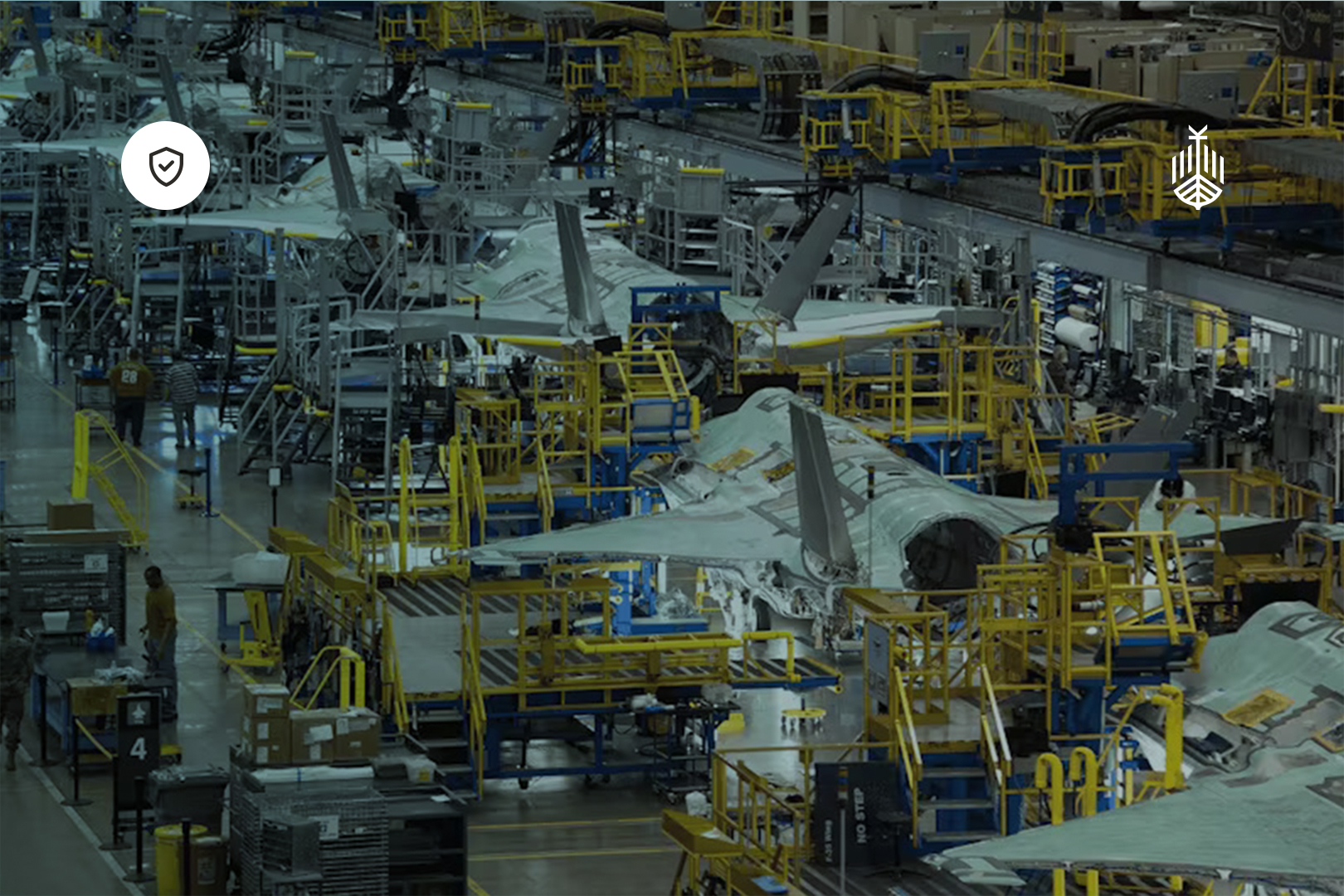Military sectors of all major nations are significant consumers of energy. Perhaps not much of a surprise given the reliance the military sector has on its various fossil fuel burning platforms (e.g., Ships, Aircraft and Armoured Fighting Vehicles) and its large-scale infrastructure needs. However, there are some compelling reasons for the military sector to address the challenges posed by this reliance.
These factors include reduction in costs, potential improvements in operational effectiveness, and of course a reduction in the environmental impact of military systems. These challenges are conceivably made increasingly more significant during times when much attention is placed on the global impact of fossil fuel usage. Add to that the widely accepted notion that investors are ever more interested in ESG criteria for evaluating business because higher ESG performance correlates with higher returns, lower risk, and long-term business sustainability.
Energy intensive operations
The sheer scale of military operations, including perceived minor interventions, and the need for constant readiness within force structures result in significant energy consumption. Military operations, including training and other activities needed to maintain readiness, involves substantial energy consumption for powering vehicles, aircraft, ships, communication systems, surveillance equipment and other mission-critical technologies. Logic supply chains are often extensive and can comprise up to two thirds of the human component of the direct fighting force (e.g., armoured infantry). The supply chain becomes a weighty energy consumer itself.
Possible interventions in this space might include autonomous resupply systems to reduce the human component. These systems may also have the benefit of removing humans from potentially ‘soft target’ formations ripe for enemy intervention. Mobile solar charging systems have been introduced though these have typically been focussed on charging soldier carried equipment such as night vison, communications, GPS, situational awareness and some autonomous unmanned vehicles. Whilst these energy management, or ‘soldier power systems’ offer significant benefit to military operations - including reducing the soldier load carrying burden and logistics demands - they still rely on battery technologies that use rare earth materials which some perspectives may find sustainably questionable.
Fossil fuel consumption and resupply
Many military platforms (except nuclear powered maritime vessels) rely heavily on conventional fossil fuels. These aviation fuel, diesel- and petrol (gasoline)-powered platforms pose an increasing negative environmental impact and are costly. The logistical challenges of transporting fuel to remote or combat areas are frequently complex, involve significant risk, and are of course expensive. The challenge of reducing fuel consumption and developing alternative energy sources are significant drivers both in terms of sustainability and in maintaining operational efficiency. In August 2022, The UK Government set out its plans regarding the future of energy systems in the British Energy Security Strategy. These plans will shape requirements in the short, medium, and long term. It includes a commitment to fully decarbonise the power sector by 2035, subject to security of supply. These announcements are expected to increase the need for flexibility of all types on the system.
The Defence Innovation Accelerator for The North Atlantic (DIANA) launched a challenge call for Energy Resiliency in June 2023 with the following brief:
“For this challenge to innovators, we are seeking technology solutions that enable the modular design of microgrids that can meet supply demands reliably. Of interest are technologies and systems that are capable of scaling and that are interoperable with other similar systems; renewable power generation; power storage; hardware and software for adaptive and intelligent power conditioning and management; and technologies for the detection and protection of the physical system and components from malicious cyber-attack. In an uncertain and changing world, there is an urgent need for more reliable, resilient and efficient energy solutions – particularly in the aftermath of natural disasters or in conflict zones. Climate change and its consequences will only make that need greater.”
This clearly showcases NATO’s commitment to overcoming the challenges of energy efficiency and sustainability in military operations.
Infrastructure and basing
Military installations and operating bases have extensive infrastructure requirements. These needs include buildings or temporary structures, power grids, and water treatment systems. Guaranteeing energy-efficient design, incorporating renewable energy sources, and implementing smart grid technologies might offer significant sustainability improvements and reduce energy consumption. However, whilst energy availability must always be assured it is not always possible to guarantee that renewable sources will ensure energy is always available. These systems will almost certainly need to be transported to theatres of operation, and this presents logistical challenges and provides ‘soft targets’ to adversaries.
Training
Military training exercises often involve large-scale deployments and simulations; naturally given the scale these activities consume substantial energy. Identifying means to optimise energy use during training - including the utilisation of virtual simulations and/or better energy-efficient equipment - can help reduce environmental impact. The challenge to the military is adopting simulations whilst maintaining a sense of the reality of operations. There is an old saying ‘train hard, fight easy’ and whilst Main Battle Tank simulators, for example, can provide a more efficient and sustainable level of training, they currently lack the reality of living off of the platform and the interaction the crew has with the platform when manoeuvring over real terrain and in often harsh conditions.
Technology development and innovation
The military sector has traditionally played a vital role in driving advancements in technology, and it can contribute significantly to energy efficiency and sustainability. Investment in research and development of renewable energy technologies, energy storage systems, lightweight materials, and efficient propulsion systems can lead to the better efficiency of military platforms and equipment and potentially more sustainable operations.
For example, The NATO Innovation Fund (NIF) is the world's first multi-sovereign venture capital fund that’s investing in start-ups developing cutting-edge technological solutions, leveraging the potential for commercial innovation to address critical defence and security challenges. The Fund will make direct investments into start-ups located in any of the 23 participating Allied nations, as well as indirect investments into deep tech funds with a transatlantic impact.
In the UK, The National Security Strategic Investment Fund (NSSIF) is Government’s corporate venture capital arm for dual-use advanced technologies. They are the Government’s centre of expertise for venture capital and dual-use national security and defence technologies.
Their organisation draws together expertise from government, security and defence, and the worlds of technology and venture capital. Using their deep knowledge of those different fields, they aim to attract businesses that are developing tomorrow’s technologies closer to buyers and innovators in national security and Defence.
Recent adoption by the EU of rules for climate neutral shipping may at some stage result in alternative fuels for shipping that may lead to adoption in military vessels. However, there are significant infrastructure challenges to overcome in the storage of these fuels.
An interesting sector to watch is hydrogen; it has its detractors, however as Lord Bamford of JCB Excavators perhaps provocatively has been quoted, if you have plant machinery running for “5000 hours of the 8000 hours available a year (on average), 8 hours of available charging time per day requires £400k battery pack with a weight of 10 tonnes for a machine that only costs £120k and weighs 20 tonnes” then perhaps hydrogen is a more credible option than some want to admit?
Waste
The military is a significant waste producer. Military operations generate various types of waste, including hazardous materials, munitions, and electronic waste. Proper waste management practices, such as recycling, waste reduction, and responsible disposal, are essential for minimising environmental impact. The challenge is of course, dealing with waste as close to operations as can be practicable to avoid moving it back down the supply chain.
Environmental impact
Military operations can have a significant impact on ecosystems and natural resources, particularly in conflict zones or during training exercises. Minimising the environmental footprint through measures such as environmental impact assessments, land restoration, and conservation efforts is crucial for sustainable military operations, at least in peacetime.
Mindset
Arguably the most challenging area to address. Mindset change is essential. Revolutionary rather than evolutionary ideas could be key to addressing how military systems can be more energy efficient and sustainable. New minds, imagination, enthusiasm and of course diverse intelligent teams of engineers and scientists with a strong desire to find new solutions are essential. Whilst these are now making their way into the thinking about civilian systems, most (engineering) academic programmes now include modules covering sustainability and environmental challenges of climate change.
However, a cursory glance at non-military sectors implies most technology improvements to reduce power consumption, for example, are just not moving quickly enough. Additionally - and worryingly - historic energy improvements in general have often resulted in increased consumption. Arguably then it may not be enough to simply look at efficiencies but breakthroughs and transformations. We also need a compelling case for young engineering graduates and apprentices to want to join the military technology sector. Do less harm has moved toward a do more good philosophy in many young engineers who can be better informed about sustainability issues than some of their senior colleagues.
Conclusion
While some of these challenges might appear straightforward at first glance, it's important to note that significant strides are being made in tackling these technological hurdles within the civilian domain. It's true that the military sector may not always be at the forefront of technological advancement in recent times, but the future holds promising opportunities for positive change. What remains unwavering is the need to address these challenges. Similar to overcoming past obstacles, this task demands multifaceted approaches, technological ingenuity, policy shifts, and a steadfast commitment to sustainable practices. The path forward involves collaboration among military entities, research institutions, and industry partners, which will catalyse advancements in energy efficiency. The drive toward sustainability in military technology is not only necessary but also holds the potential for significant progress. The skill of systems thinking will undoubtedly play a pivotal role for all those involved, fostering a brighter and more sustainable future.














